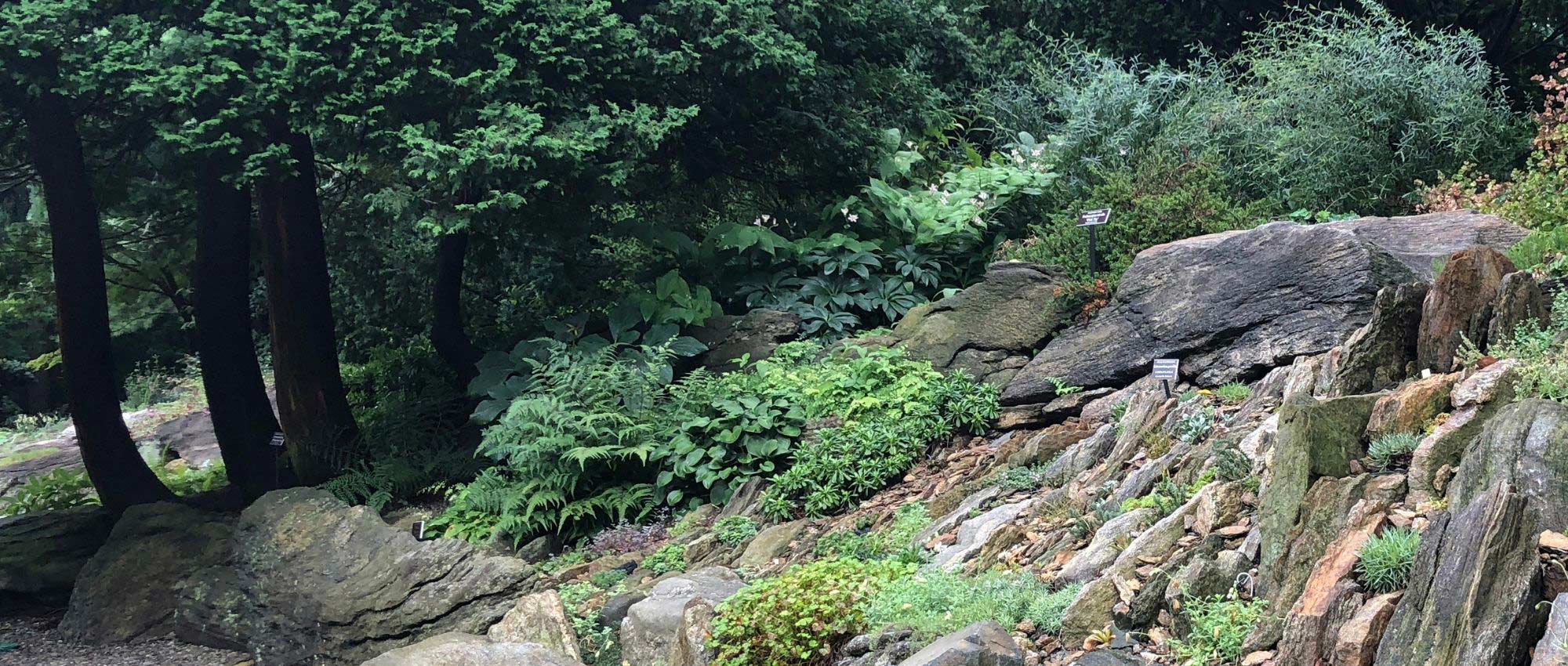
10 plants to create a shady rockery
Discover the most suitable plants!
Contents
When people think of rock gardens, they mainly imagine dry, sunny rockeries made up of small groundcover plants, succulents or alpine perennials. However, it is entirely possible to create a rock garden in a cool, shaded spot. Plant choice will then be completely different!
This type of rock garden has a very natural, rather lush and wild look. Ideally, use plants with decorative, generous foliage (ferns, hostas…), and a few plants with decorative flowering to add small touches of colour. We recommend favouring perennials, which will remain in place for several years. You can create such a rock garden in an understorey, possibly near flowing water (fountain, stream, spring…). To make the right choice and find those that will thrive there, discover our selection of plants suitable for a shaded rock garden!
Ferns
Ferns are plants that appreciate shady and relatively cool, and some are particularly suited to rockeries! They are indispensable for giving garden a very natural appearance. The Polypodium vulgare and Asplenium trichomanes require very little substrate and are able to grow on low walls! Both are found in the wild in France. You can also choose the Hart’s-tongue fern, which sometimes grows spontaneously in scree areas or on old walls, in relatively cool, shaded situations. For an original effect, you can opt for the Coniogramme emeiensis, which has green fronds striate with yellow. Discover also the Cyrtomium falcatum, a fern with large divided fronds, dark green and glossy, reminiscent of mahonia foliage.
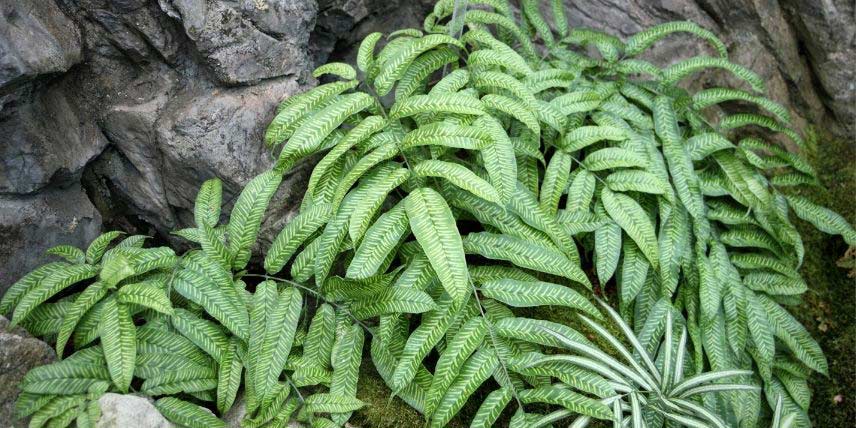
Coniogramme emeiensis (photo Cephas)
Saxifrages
Saxifrages are charming small plants ideal for rockeries or to embellish a low wall. They bear decorative foliage as well as beautiful small single, star-shaped flowers, sometimes gathered in airy, very light inflorescences. We particularly recommend Saxifraga umbrosa ‘Variegata’, which bears green leaves variegated with yellow and produces small white flowers in spring. It will thrive in a cool, part-shaded position. Saxifraga x urbium, meanwhile, offers handsome green leaves and very delicate, pale pinkish-white flowers. It is also known as “Painter’s Despair”, because of the extremely light, airy character of its flowering. Also discover Saxifraga stolonifera ‘Cuscutiformis’, which has striking leaves ranging from green to brown with some pinkish tones and beautiful silvery-white marbling. It also produces large, airy inflorescences made up of small white flowers. Finally, in part shade, choose Saxifraga x arendsii, which forms small tapeta resembling moss and bears pink, red or white flowers.
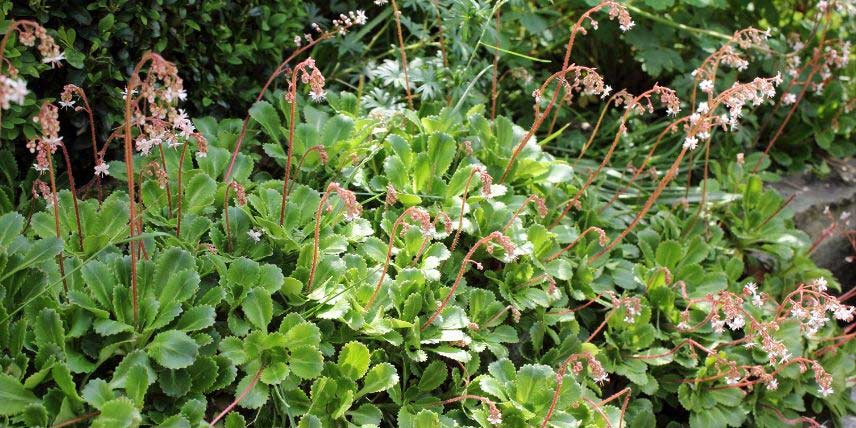
Saxifraga umbrosa (photo Holger Casselmann)
→ Watch Olivier and Mickaël’s video on Saxifraga stolonifera
Discover other Rockery perennials
View all →Available in 0 sizes
Available in 0 sizes
Available in 1 sizes
Available in 1 sizes
Available in 0 sizes
Available in 0 sizes
Available in 1 sizes
Available in 0 sizes
Available in 0 sizes
Grasses
Some small grasses are particularly useful for adding a little volume and lightness to a rockery. Many species of Carex can adapt to shaded situations! They will also appreciate relatively moist soil. You could, for example, choose Carex morrowii ‘Variegata’ or ‘Ice Dance’, which display very attractive green foliage variegated with creamy white. In the same style, discover Carex oshimensis ‘Evergold’, with green and yellow leaves. Carex flacca is also interesting for its blue-tinged foliage. To bring lots of brightness, choose Hakonechloa macra ‘Aureola’, which offers superb golden-yellow foliage, with a trailing, cascading habit. Finally, woodrush, Luzula sylvatica, is also of interest for its attractive green leaves and delicate flowering in spikelets.
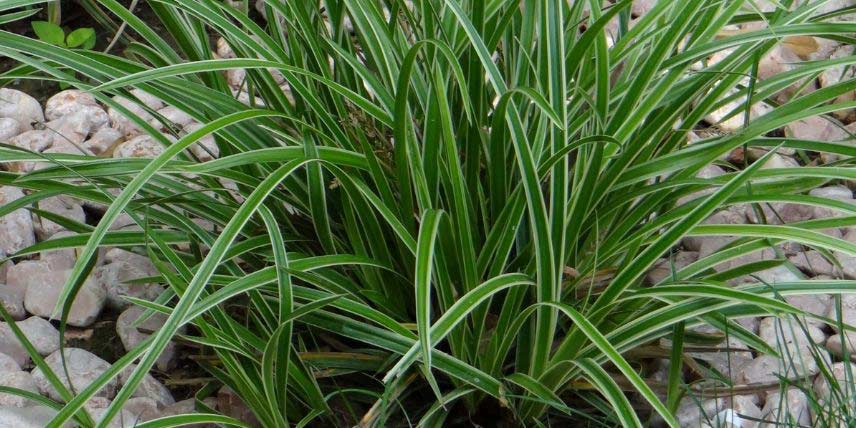
Carex morrowii ‘Ice Dance’
Tiarella
Tiarella is a superb plant with decorative foliage and an airy flowering. It produces in spring light inflorescences composed of small white or pink flowers. Leaves can take different colours: green, yellow, bronze, purple… They are palmate and lobed, the lobes more or less deeply cut. Tiarella foliage is somewhat reminiscent of Heuchera, to which they are closely related and with which they can hybridise to produce Heucherella. Tiarellas thrive in relatively cool, humus-rich, light soils. We particularly recommend growing Tiarella wherryi, a charming small perennial with pinkish-white flowering and soft green foliage, more or less marked with brown along the veins.

Tiarella wherryi (photo Dinkum)
Pearlwort
Subulate sagina (Sagina subulata) forms dense, uniform tapetum of a lovely green hue, somewhat resembling moss. It is covered in spring with small single white flowers, each with five petals. It covers soil effectively and will easily fill gaps between stones in a rockery. It remains very low, not exceeding 5 cm in height. It will allow creation of a very beautiful verdant, fresh display to showcase other more colourful flowering. Sagina is also ideal for creating a Japanese-inspired flowerbed, or a rockery within a zen garden.
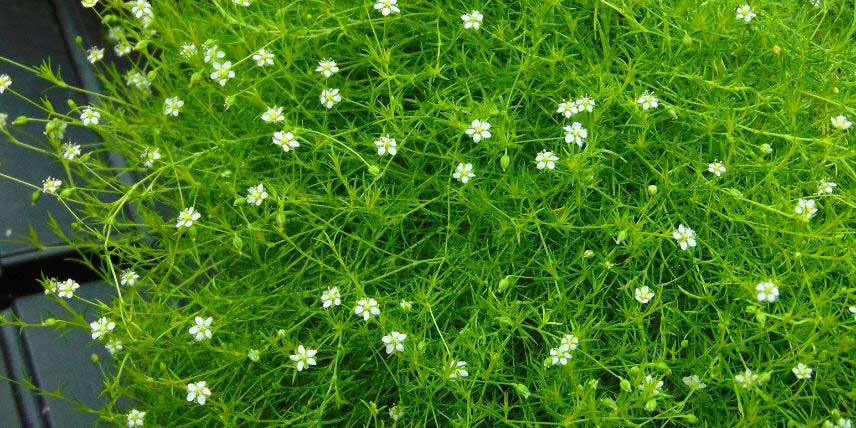
Sagina subulata
Ajuga reptans
Creeping bugle, or Ajuga reptans, is a perennial groundcover offering purple-tinged evergreen foliage and bluish flowering. It spreads by stolons, helping to limit growth of weeds. It is fairly low, rarely exceeding 20 cm in height. This plant can easily be found in the wild in France. Its flowers are labiate (forming two lips), and are grouped on small upright stems. Some varieties are valued for their very dark purple foliage (such as Ajuga reptans ‘Atropurpurea’), or variegated (Ajuga reptans ‘Variegata’); others stand out for their white flowering (Ajuga reptans ‘Alba’), or pink flowering (Ajuga reptans ‘Purple Torch’).
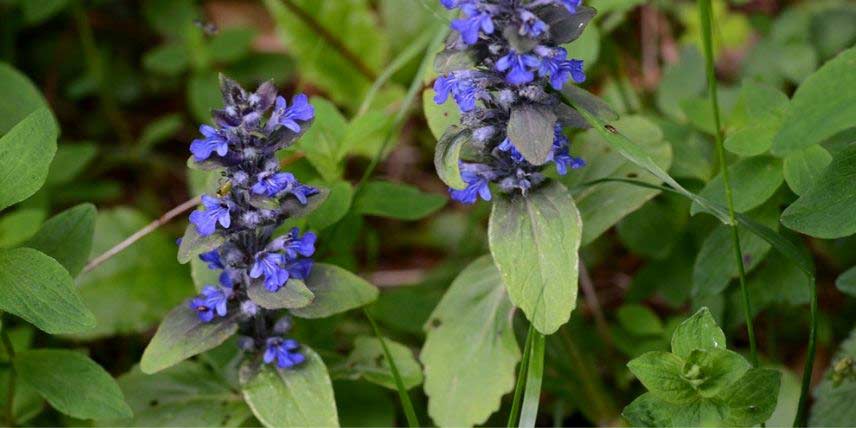
Ajuga reptans (photo Radio Tonreg)
Hostas
Hostas are very attractive shade plants with a lush appearance, forming interesting clumps for their decorative foliage, which takes on superb colours. Their leaves are large and broad; they can be green, bluish, golden, variegated with white… Their flowering is also appreciated, taking the form of bell-shaped blooms in white or pale mauve. Hostas thrive in cool, even damp, deep soils that are fairly rich in organic matter. For a rockery, we recommend choosing the smaller ones, such as the varieties ‘Blue Mouse Ears’, ‘Diamond Tiara’, ‘Stiletto’, or ‘Warwick Delight’… Varieties with foliage variegated with white or cream are ideal for adding brightness!
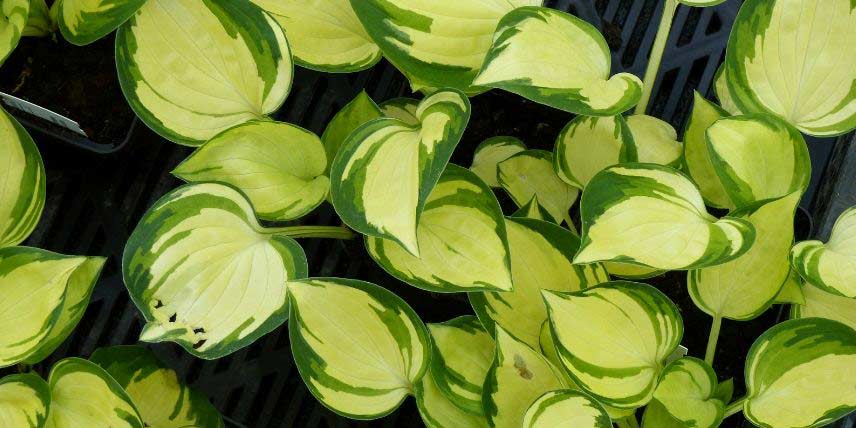
Hosta ‘Warwick Delight’
Corydalis
Corydalis are small perennial plants with attractive dissected foliage and a long flowering period made up of small elongated colourful flowers. They require very little care and can self-seed spontaneously in the garden! They will easily find a place among stones, in a shady rockery. They prefer relatively cool, rich, well-drained soil. We particularly recommend growing species Corydalis solida, which has violet-mauve flowers. Also discover Corydalis flexuosa, with blue flowers.

Corydalis solida (photo Joost J. Bakker)
Epimedium
Epimedium, also called barrenwort or fairy wings, is a delightful perennial that produces small bell-shaped flowers. These flowers have an extremely delicate, refined appearance. Depending on the variety, they can be mauve – lilac, pinkish white, yellow, orange… Foliage is decorative too, with colour that changes with the seasons. It can be deciduous or evergreen, depending on the species. Epimedium is ideal for naturalistic or wild-style gardens. It prefers cool soil, is hardy, has few disease problems and requires almost no maintenance.
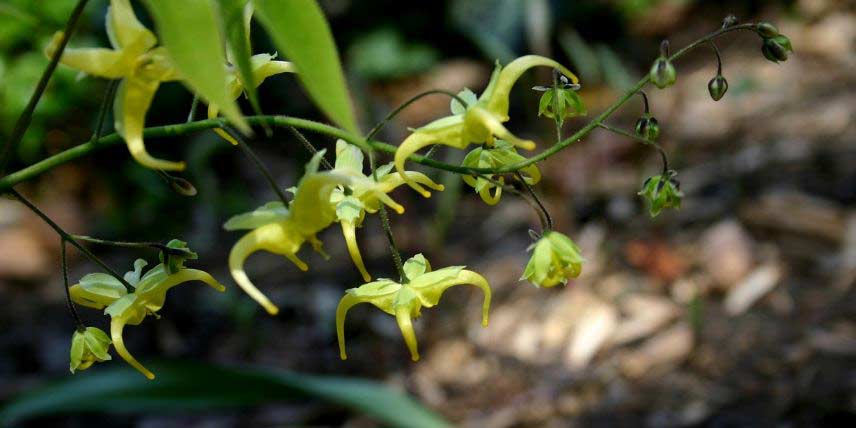
Epimedium franchetii (photo SB Johnny)
Lamium
Lamium is a groundcover plant that offers decorative, dentate foliage, somewhat resembling that of nettles, as well as flowers often pink, mauve or white, sometimes yellow. These have an irregular shape, with petals divided into two lips, and are gathered in the axils of the leaves. Discover in particular Lamium maculatum, which bears violet–mauve flowers, sometimes white (as with the Lamium maculatum ‘White Nancy’). Some varieties have attractive foliage variegated with silvery white.

Lamium maculatum
- Subscribe!
- Contents
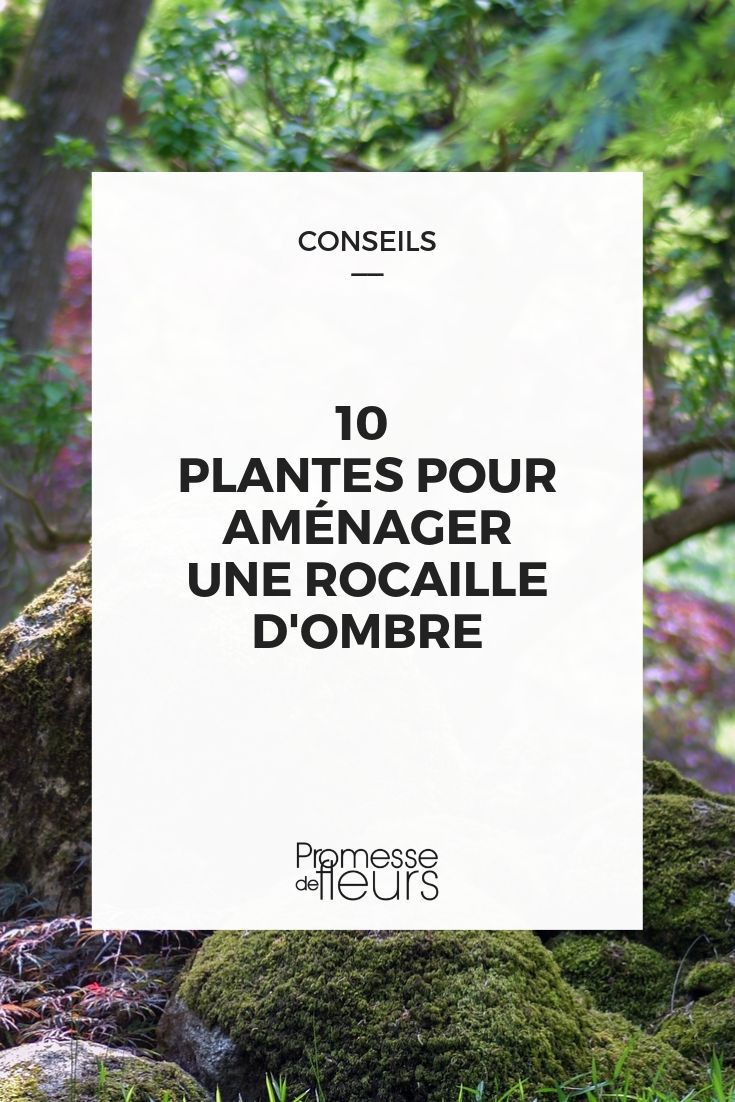































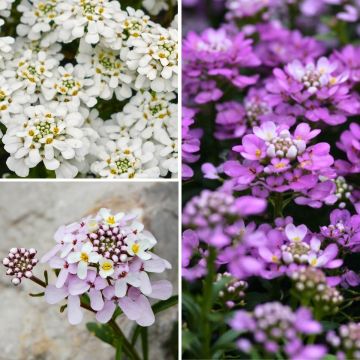
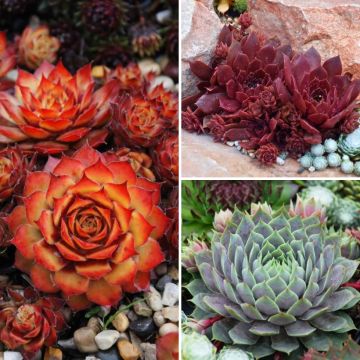
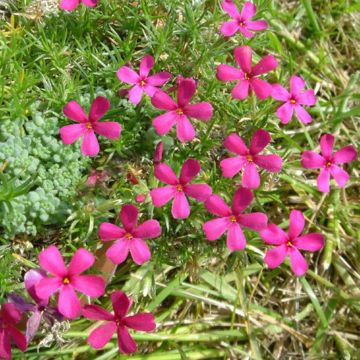

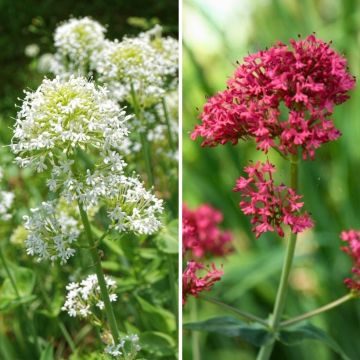
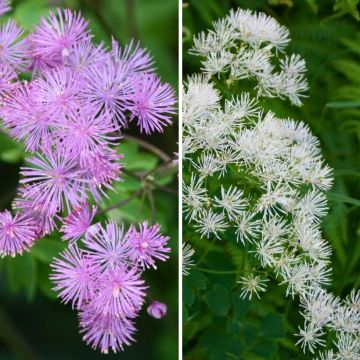

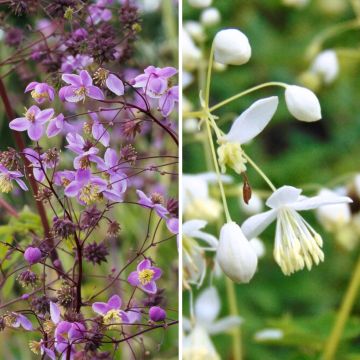
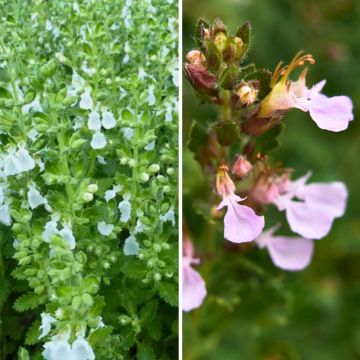
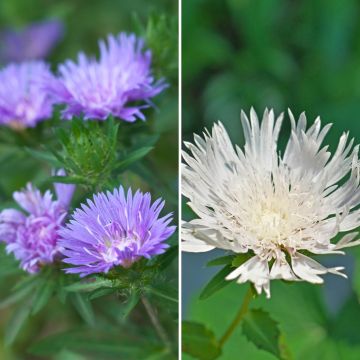
Comments